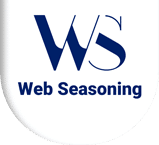The digital world offers an ocean of possibilities for the projected goals and the commercial market to be reached. New approaches are constantly developing how a marketer can use the advertising budget to engage new customers and it is still changing and evolving.
In the ten-plus years since the birth of programmatic marketing, it has delivered its original promise to become the future of advertising on the web. The latest Zenith report shows that programmatic marketing is on the rise and concluded that ‘In 2020, almost 70% of all digital media will be trading, programmatically amounting to $US122 billion. This programmatic growth is undoubtedly very prestigious and impressive, with the same statistics showing how programmatic accounted for less than 10% of marketing ten years ago.’
So, what refers to as programmatic marketing, and how it works? And what advantages could it have for the company? Check out Andrew Defrancesco to learn all about advanced, automated strategy and its potential impact on your organization’s bottom line!
Programmatic Marketing: Defining the strategy
An advanced marketing strategy, programmatic marketing uses automated, real-time bidding mechanism that buys ad inventory for the marketer. Focused on how customer interacts and moves through, programmatic marketing allows you to advertise to users in hyper-targeted, specific contexts in effective manner.
When a visitor enters a page set up for programmatic marketing, the marketplace puts up an auction for interested companies to bid on an advertisement on a particular page. The process is also termed as ad impression auction. Although many advertisers will compete for this ad position, only one company will win the spot. The company bidding the most money wins the work, and the ad will be shown on the page.
The crucial part of the process is to be automated. It may seem like taking over a few minutes, but it takes only in milliseconds to happen in reality. The winner of the auction gets determined even before the page loads for the user. It can materialize as companies set maximum bid well ahead of time. They set the amount they wish to pay, like the competitors. When an advertising spot is available, the bids are compared and calculated for business’ that qualify for the place.

The company’s ad appears on the page while it loads. The ad makes an impression on the individual user, but it is still valuable. There is a reasonable probability for a person to click on the advertisement because it is relevant content.
Programmatic advertising never includes paid search (and classified). Significantly, Google Ads with YouTube inclusive in the offer is the biggest online ad seller. While we see figures at the start of the article that programmatic accounts for most online advertising, it’s misleading.
Programmatic Marketing: How does it work?
When anyone clicks on a web page with advertising space configured for programmatic advertising, the page’s publisher puts up an ad impression for auction in an ad marketplace. The ad marketplace runs an auction among advertisers interested in displaying an ad to that specific customer by clicking on the particular page. There may be several advertisers competing in the same auction, and whosoever ultimately willingly bid the most, wins the auction, and their ad gets displayed to the customer while the page loads.
The automated process, with the maximum price each advertiser bid for the impression, has been programmed in, already. The auction is completed within the milliseconds of loading of the page.
It may seem like a long, cumbersome process, but it is an easy process to culminate in a few milliseconds. Below is the simplified version of the steps to explain how programmatic marketing works in the real world.
- Somebody clicks on a page.
- The page’s owner places an auction to bid to open advertising spot.
- The marketplace gets to hold an auction among the advertisers who are competing for the place.
- The advertiser bidding the most wins the spot with a right to display the ads.
- The winning ad is available on the site.
- Customers tap on the ad to make a purchase.

Programmatic Marketing: Advantages in Business World
Programmatic marketing swims through a series of opportunities, which would be impossible if did manual ad placement. It permits advertisers to procure digital media without pre-negotiating a price, so they pay only for the relevant impression they get. They can sign up for a minimum number of impressions or a minimum budget, making digital advertising more flexible. They may buy digital media across publishers, which reduced administration costs.
There are many benefits that the business will receive from programmatic marketing.
1. Setting up the frequency
While setting up the bid, the user can set the frequency and time. If you wish to know about the people you want to reach while browsing the Internet, you can tailor the campaign to make you able to only bid for advertising spots that fit the qualifications.
It is an excellent benefit for the business because it enables you to concentrate even more on the target market. You can reach at a particular time of day while they are online.
It prevents the wastage of money—no need to put money towards ads that the market’s targeted people won’t see.
It helps to put money towards reaching the target market far better way.
2. Setting the price
Another advantage is setting the amount you want to pay. Like pay-per-click (PPC) advertising, you put your maximum bid you are willing to pay.
It makes programmatic marketing a flexible option by setting the amount you want to pay if someone clicks on your ad.
This is an excellent option for the business to set the business budget and control its spending habits. Spend money on people you wish to reach.
And have better control over the advertising campaign.
3. Relevant impressions
With programmatic marketing, pay only for relevant impressions and not create a blanket campaign to reach a few people in the target market. This method enables you only to get required impressions.
A marketer can set up the minimum number of impressions he/she wants to receive to ensure the campaign’s goals.
At times you only pay for relevant impressions. You’re investing money to reach people who are most likely to remain covert, enabling to rise better return on investment (ROI) for the business.
4. Advanced targeting
Programmatic marketing provides to target a niche audience.
It’s pro way to market as it lets you figure out what kind of content resonates with the audience. The marketer will see what content gets netizens for clicking an ad and which piece of content positively impacts the audience.
You can create a better user experience with advertisements while utilizing tailored ads to reach customers. They are likely to be clicked on the ad. The ads are directed towards people who most likely convert to target the market better.
5. Setting up of goals
Programming marketing helps to set goals. It bothers me when you don’t hope to convert by putting advertisements in front of people.
Instead, choose a specific aim to achieve. The ability to set different goals makes it a versatile option.
6. You can use it with different mediums
Programmatic marketing is versatile in many ways. The most favourable options is the ability to use programmatic marketing on other mediums.
You can use it on either a desktop or a mobile or videos or apps. It makes programmatic marketing a great option because you can tailor your ads to the medium that fits best. If you know more of your target market will conduct searches and browse on mobile, you can tailor advertisements to reach the best user. This permits you to get people through the medium which the audience uses the most.
Programmatic Marketing: Future of Possibilities
The only thing that increased programmatic adoption is marketers’ inadequate knowledge of the procedure and reluctance to leave old ways of purchasing ads favouring the complex yet handy, automated and instant bidding process used in new programmatic marketing. A little and privileged knowledge can take the marketer’s a long way, with the introduction of programmatic marketing useful for digital marketers.
No matter the size of the business, programmatic marketing shows valuable potential. Companies are already investing $60 million on programmatic marketing yearly — and the number continues to increase. It showcases the power and impact of programmatic marketing on advertising strategies. While enhancing the online ad strategy, it is advisable to try programmatic marketing. While initiating the process in-house, you can expedite it with a programmatic service provider by creating, launching, and managing the campaigns.

Programmatic Marketing: Recommendations
Suppose you are thinking about using programmatic marketing, and wondering if it’s the right choice. Will it fit into your marketing plan? What opportunities are available with your campaign.
Display marketing is an excellent opportunity to do that. Display marketing can drive in new leads for your business. Never used display marketing; you can have a chance to get new leads to build brand awareness which is budget-friendly. If you wish to reach more leads on a tight budget, this option won’t break your company’s bank. You can gain new leads and do it cost-effectively.
If you wish to advertise on social media, you can use LinkedIn and Facebook sites to target people in the audience. Remarketing has brought success to various companies.
Use a tracking feature enables a marketer to check who visited the website to give a right perspective of who is interested in the business. The marketer can use programmatic marketing to reach a broad range of people and convert with this information.
Conclusion
Programmatic Marketing is one of the most impactful developments in digital marketing. It is a type of marketing that enables you to target specific customers on a particular page they are visiting.







